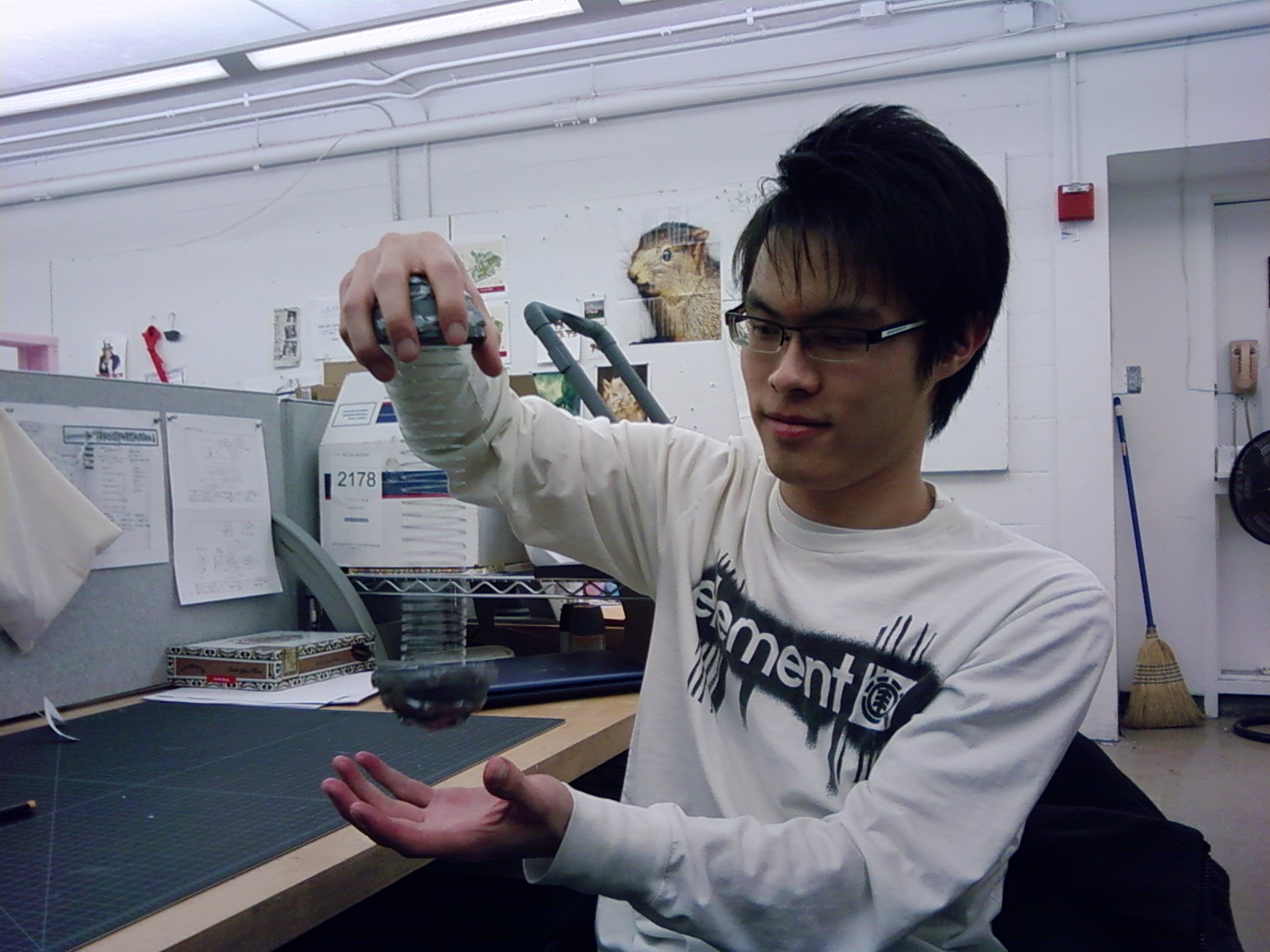Using cutters we removed the styrene shell from the original mold. The we sanded the styrene shells to be uniform and smooth and then using another Styrofoam ball cut that using the band saw and spray painted both parts gray. After they dried we cut a hole with the diameter of the slinky and about 1in deep in the flat surface of each half of the ball. Then we cut the slinky down to a size that allows the two halves of the Styrofoam ball to fit snuggly together. Then both holes in the halves of the ball were filled with tacky glue and the slinky was set in. The halves and slinky were then fixed and allowed to dry.
After the glue set we tested many different ways to adhere the magnets to the Styrofoam ball. Tacky glue was not strong enough to hold the magnets and super glue melts foam, and does not bond. We settled on duct tape and using strips of approximately 1/4 inch and placed one magnet (with the polarity being the same outwards) every 1 inch. On each hemisphere we took 3 measurements for the diameter of the sphere. These became the lengths of the strips of duct tape. We then affixed the duct tape with the magnets to the hemispheres. At the top of each hemisphere we took one more magnet and affixed it using a thicker (about 1/2 inch by 1/2 inch) square of tape. After this we took individual magnets and using 1 inch long strips of the 1/4 inch duct tape placed a single magnet on it. We made about 30 of these individual strips and then placed them along the sphere in gaps between the longer strings of magnets.


After the balls were as tightly packed with magnets as possible we applied hot glue to the inside of the styrene shell and carefully placed the Styrofoam hemisphere inside and attached it. The using a circular welding technique we sealed the edge of the shell and hemisphere. After the first side was cooled we repeated this process a second time to the second side. Finally using an Exacto blade we removed any stray elements of glue.
Introduction | Material and Preparation | Vacuum-Forming Machine | Laser Cutting | Assembly of Ball | Assembly of Gloves | Final Product
KinHang Leung